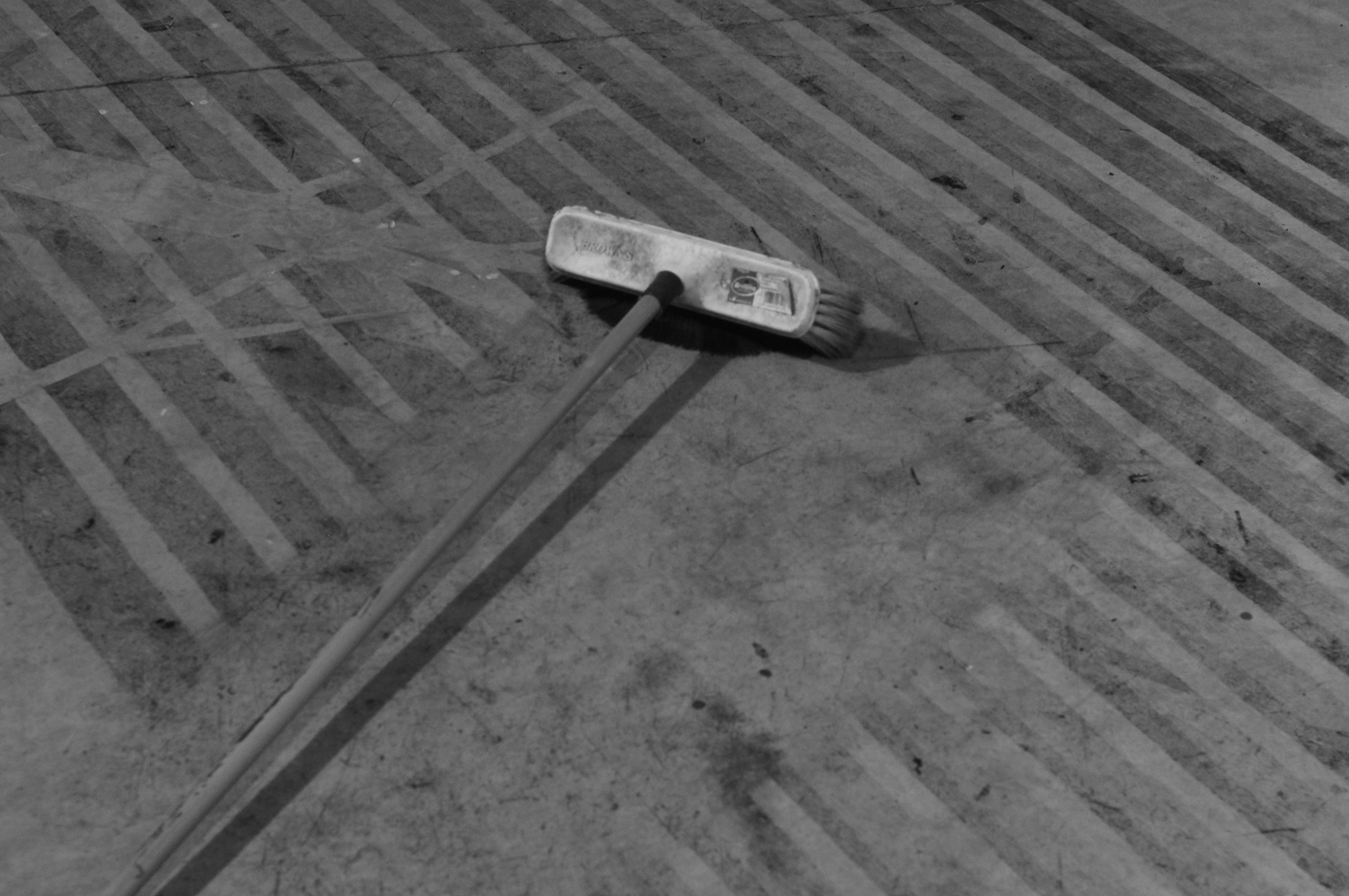Interstices Journal of Architecture & Related Arts: Issue 21 Fixing
 Carl Douglas (2019), Cattle Grate #2 being erased. From Kuku Drafts, in association with Te Waituhi-ā-Nuku and Monique Jansen.
Fixing
Carl Douglas (2019), Cattle Grate #2 being erased. From Kuku Drafts, in association with Te Waituhi-ā-Nuku and Monique Jansen.
Fixing
Maintenance and care might be imagined to be conservative practices, aiming at stasis or keeping something going in the same track. Yet this underestimates the dynamic nature of fixing. To repair or sustain something is to become intimately entangled in processes of decay, ageing, entropy; but also, with growth, complexity and otherness, with fallow states, and with regeneration. To develop a fixation with something is to be turned implacably away from oneself. Rather than fixing in place, this issue of Interstices asks how we fix things together across and through places.
Donna Haraway contrasts poiēsis as “the activity in which a person brings something into being that did not exist before” — with sympoiēsis, a co-creation, a “making things together”. Designing space is necessarily sympoiētic, emerging from a complex collusion of the human and other-than-human. Accordingly, we are interested in shifting our view from individualised moments of creativity to bring into frame how space might be co-authored, negotiated through performances of maintenance and care. What are the spatial possibilities of this continuing dialogue between architecture and other domains? What is the agency of things beyond us? How might divergent scales—the scale of a virus say—jolt us to consider space differently?
We welcome contributions from architecture and art practice, philosophy, theory, ethnography, and geography, that speculate on questions of Fixing. The intention is to capture a wide spectrum of disciplinary approaches and voices that chart the unanticipated directions and productive suturing of domains considering fixing, maintenance and care. Contributors are invited to submit papers, theoretical and critical reflections, and documentation of experimental creative works.
Topics include but are not limited to:
- Spaces, sites, and practices of maintenance, care, and kaitiakitanga
- Indigenous models of co-creation such as papakāinga and talanoa
- Non-human agency: objects / animals / plants / AI / insects / viruses
- Decay, ageing, entropy
- Historical narratives of care
- Architectures of repair and maintenance
- Critiques of the Anthropocene/Chthulucene
- Creative practices configured by co-presence and co-authorship, such as drawing.
We invite you to submit a full paper inclusive of an abstract for the forthcoming Fixings issue of Interstices: Journal of Architecture & Related Arts.
By 5 p.m. on Wednesday 31 March 2021:
Abstracts of 300-500 words are to be submitted to Sue Hedges susan.hedges@aut.ac.nz . Abstracts will be assessed by an academic panel comprising the issue editors and the Interstices executive editors.
By 5 p.m. on Thursday 15 July 2021:
Full papers of 5000 words are to be submitted to Julia Gatley julia.gatley@auckland.ac.nz for refereeing.
NB: contributing authors will be asked to referee one or two of the other submitted papers.
Saturday 14 August 2021: Interstices Workshop
All authors and referees will meet to discuss and workshop the papers. At this workshop, authors will not present their own papers. Instead, the referees will present their reports as a means of opening up a group discussion on each paper. Full participation in this workshop is an essential requirement for publication in the issue. The workshop will include both in-person participation at the Victoria University of Wellington School of Architecture, 139 Vivian Street, Wellington, and remote participation via Zoom. Authors will be expected to rework their papers in light of the referees’ reports and this broader workshop discussion, with final acceptance at the discretion of the editorial team.
By 5 p.m. on Thursday 30 September 2021:
Final papers to be submitted to Julia Gatley julia.gatley@auckland.ac.nz .
For publishing options and formatting requirements, please refer to the Guidelines for Submissions on the Interstices website www.interstices.ac.nz .
Issue Editors:
Simon Twose – Victoria University of Wellington, Te Herenga Waka
Carl Douglas – Auckland University of Technology, Te Wānanga Aronui o Tāmaki Makau Rau
Jeanette Budgett – UNITEC Institute of Technology, Te Whare Wānanga o Wairaka
Executive Editors:
Andrew Douglas – University of Auckland, Te Whare Wānanga o Tāmaki Makaurau
Susan Hedges – Auckland University of Technology, Te Wānanga Aronui o Tāmaki Makau Rau
Julia Gatley – University of Auckland, Te Whare Wānanga o Tāmaki Makaurau
References:
Easterling, K. (2018). Medium design. Moscow, Russia: Strelka Press.
Franco, B (2020) Beyond the breakdown: Three meditations on a possible aftermath. e-flux, 31 (March). Retrieved from https://conversations.e-flux.com/t/beyond-the-breakdown-three-meditations-on-a-possible-aftermath-by-franco-bifo-berardi/9727.
Ghosn, R., & Jazairy, E. H. (2018). Geostories: Another architecture for the environment: New York, NY: Actar.
Graham, S., Thrift, N. (2007), Out of order: Understanding repair and maintenance. Theory, Culture & Society, 24:3. Retrieved from http://doi.org/fvdqbn
Haraway, D. (2016). Staying with the trouble. Durham, NC: Duke University Press.
Hayles, N. K., (2014). Speculative aesthetics and object orientated inquiry (OOI). In R. Askin, P. J. Ennis, A. Hägler, Philipp Schweighauser (Eds.), Speculations V: A Journal of Speculative Realism (pp. 158-179). New York, NY: Punctum.
Jackson, S. J. (2014) Rethinking repair. In T. Gillespie, P. Boczkowski, K. Foot (Eds.), Media technologies: Essays on communication, materiality and society (pp. 221-240). Cambridge, MA: MIT Press.
Lepawsky, J., Liboiron, M., Keeling, A., & Mather, C. (2017). Repair-scapes. Continent, 6(1), 56–61.
Mattern, S. (2018). Maintenance and Care. Places Journal, November 2018. Retrieved from, https://doi.org/10.22269/181120.
Thrift, N. (2008). Non-Representational theory: Space | place | affect. New York, NY: Routledge.
Tsing, A. L. (2015). The mushroom at the end of the world: On the possibility of life in capitalist ruins. Princeton, NJ: Princeton University Press.

